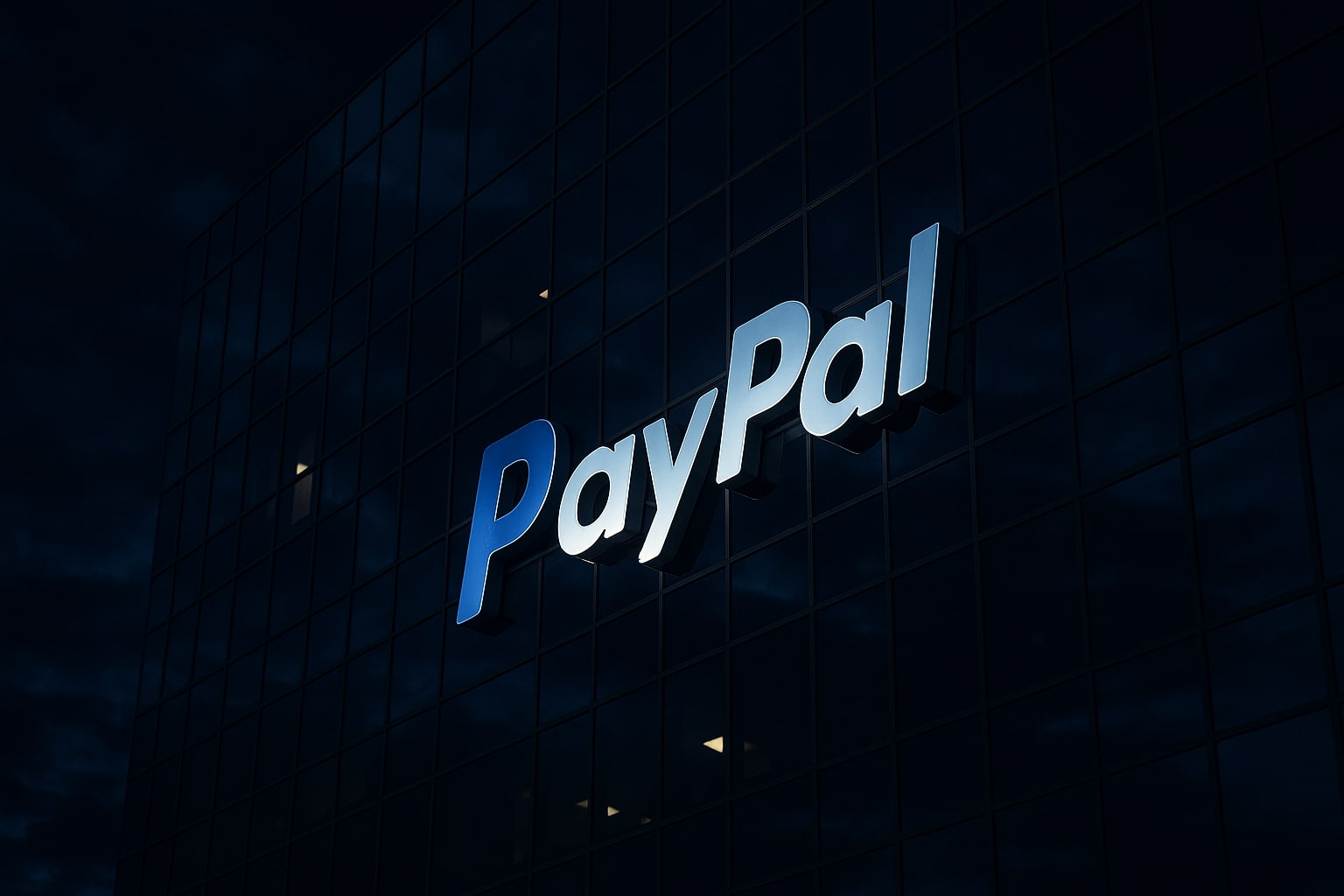
Salesforce Stock Price Forecast - CRM Targets $275 as AI-Led Agentforce and Informatica Drive New Growth Cycle
Salesforce’s AI platform Agentforce delivers 12,500 activations and $1.2B ARR, positioning the stock for a breakout above $247 resistance | That's TradingNEWS
Salesforce (NASDAQ:CRM) — AI Integration Redefines Enterprise Growth Amid Investor Skepticism
Salesforce Inc. (NASDAQ:CRM), trading at $227.11 (+0.77%), stands at a pivotal point in its evolution. After a year of underperformance and a 26% decline from 2024 highs, the company is rebuilding momentum through Agentforce, its AI-powered automation platform. The stock remains well below the 2021 peak of $369, yet underlying data shows a company repositioning itself for long-term structural growth with stronger balance-sheet discipline, expanded AI assets, and an increasingly profitable operating base.
Agentforce Driving The Next Phase Of Salesforce’s Evolution
Agentforce, launched in September 2024, is not a cosmetic rebrand — it’s a technical rearchitecture of Salesforce’s core workflow engine. The platform integrates autonomous AI agents directly into client data environments, allowing tasks to be executed and optimized with minimal human input. Within the first three quarters of launch, 12,500 Agentforce engagements were recorded, including 6,000 paid implementations. During 2Q FY2026, the Data Cloud and AI segment reached $1.2 billion in annual recurring revenue, up 120% year-over-year, with 60% of new bookings from first-time Salesforce clients.
The company expects continued triple-digit growth for Agentforce over the next year as it anchors Salesforce’s path to $60 billion in annual revenue by FY2030. This projection implies a compound annual growth rate of around 10%, a realistic target given Salesforce’s 20% market share in the global CRM market.
Informatica And Spindle AI Strengthen Salesforce’s AI Foundation
The $8 billion acquisition of Informatica and the pending purchase of Spindle AI solidify Salesforce’s long-term AI infrastructure. Informatica enhances Salesforce’s data integrity pipeline, addressing the biggest weakness of large language models — hallucination and context loss. By combining Informatica’s data governance system with Salesforce’s existing Data Cloud, Benioff’s team ensures every AI-driven decision is grounded in verifiable, connected data.
Spindle AI adds advanced scenario planning and financial modeling capabilities. Its engine allows CFOs to run multiple simulations in real time — such as tariff impacts, supplier shifts, or pricing elasticity — without traditional manual modeling. Together, these assets position Salesforce as the only enterprise provider capable of merging customer relationship intelligence with autonomous decision-making across global operations.
Financial Strength Supports Expansion And Shareholder Value
For the July 2025 quarter, Salesforce reported $10.24 billion in revenue, up 9.77% year-over-year, and net income of $1.89 billion, marking a 32% increase. Net profit margin rose to 18.43%, while EPS climbed to $2.91, up 13.7%. The company’s cash reserves of $15.37 billion and total assets of $97.57 billion provide ample liquidity to fund both R&D and shareholder returns.
Total liabilities stand at $36.25 billion, with equity at $61.33 billion, translating to a conservative debt-to-asset ratio of 37.1%. While free cash flow dropped to $378 million due to heavy integration costs from Informatica, management expects a rebound by mid-2026 as operational synergies mature. Despite this, the balance sheet remains one of the cleanest in large-cap enterprise software.
Valuation Reset Highlights Undervaluation Versus Peers
At a market capitalization of $216 billion, Salesforce trades at 20× forward earnings and a 7.5× trailing price-to-sales ratio. If the company achieves its FY2030 revenue goal of $60 billion, that multiple compresses to around 3.7×, implying meaningful upside re-rating potential. Compared to peers, Salesforce’s valuation remains conservative — Microsoft (35× P/E), Google (28× P/E), and Nvidia (51× P/E) — despite maintaining comparable margins and higher cash coverage.
The non-GAAP P/E of 21.9× and price-to-book ratio of 3.5× place CRM near historical lows. The discount is largely sentiment-driven, tied to fears of AI displacement, rather than any deterioration in business fundamentals.
Growth Outlook And Margin Expansion To Boost Earnings
Revenue growth has moderated to 8.3% year-over-year, but profitability continues to expand. Operating margins near 33–34% are expected to rise toward 40% by FY2030, driven by three strategic levers — internal AI cost efficiencies, incremental pricing power, and disciplined capital deployment. Each percentage point of margin improvement adds roughly $0.30 to EPS, supporting a projected 14–17% compound EPS growth rate through the decade.
By automating its own sales and service operations through Agentforce, Salesforce is demonstrating its own product advantage — efficiency through integration. Management estimates Agentforce adoption within Salesforce itself could lower internal support costs by up to 22% over 24 months, showcasing the platform’s scalability.
Competitive Landscape And Narrative Risk
Investor hesitation around NASDAQ:CRM stems from the perception that generative AI tools like ChatGPT or Gemini could displace Salesforce’s workflow software. Yet data contradicts this assumption. According to an MIT study, 95% of internal AI projects fail to produce ROI, while vendor-partnered implementations — Salesforce’s core service model — succeed at far higher rates.
Salesforce’s enterprise stickiness remains its moat. Once integrated, systems are rarely replaced. The company’s 93% renewal rate aligns with peers ServiceNow (98%) and Workday (97%). Transitioning enterprise systems involves massive cost and operational risk, making Salesforce’s installed base deeply entrenched.
The main threats remain competitive rather than existential. Microsoft Dynamics 365 with Copilot, Oracle Fusion, and HubSpot Enterprise all push AI-integrated CRM solutions, but Salesforce’s decade-long multi-cloud presence and security certifications create significant switching friction for clients in regulated sectors.
Read More
-
PayPal Stock Price Forecast - PYPL Surges on AI and Venmo Growth as Analysts Eye $100 Price Target
22.11.2025 · TradingNEWS ArchiveStocks
-
Ethereum Price Forecast - ETH-USD Steadies at $3,085 as ETF Demand, Fed Caution, and Whale Accumulation Shape Outlook
22.11.2025 · TradingNEWS ArchiveCrypto
-
Oil Prices Forecast - Oil Prices Fall to $58.06 (WTI) and $62.56 (Brent)
22.11.2025 · TradingNEWS ArchiveCommodities
-
Stock Market Today - Dow Jumps 493 Points as Fed Cut Bets Surge; Nasdaq Surges With NVDA,ORCL and LLY, S&P 500 Extend Broad Market Rally
22.11.2025 · TradingNEWS ArchiveMarkets
-
GBP/USD Price Forecast - Pound Holds 1.3102 as U.K. Fiscal Confidence and Fed Division Keep Sterling Firm
22.11.2025 · TradingNEWS ArchiveForex
Capital Allocation Strategy Reflects Maturity And Confidence
Since 2022, Salesforce has shifted from an acquisition-driven growth model to a shareholder-return framework. The $20 billion repurchase program and the quarterly dividend introduced in 2024 marked a turning point toward capital discipline. The dividend yield stands at 0.73%, modest but symbolically important as Salesforce transitions into a stable, income-generating enterprise.
Institutional ownership exceeds 78%, while insiders (tracked via insider transactions) hold approximately 3.2%. These levels indicate strong alignment between management and shareholders, even as AI spending compresses short-term cash flow.
Market Sentiment, Execution Pressure, And AI Reality
Salesforce’s biggest challenge now is not demand but narrative inertia. The stock remains in a narrow band between $220 and $240, with the 200-day EMA near $247 marking a decisive technical ceiling. Market fatigue around AI “buzzwords” has slowed sentiment recovery, even as Agentforce performance data improves each quarter.
With 12,500 AI agent activations, $1.2 billion in ARR, and visible traction in cross-selling, Salesforce’s early adoption curve is stronger than consensus implies. The successful integration of Informatica could catalyze margin expansion and reignite growth multiples in early 2026, shifting the conversation from AI risk to AI monetization.
Technical Overview And Price Action Dynamics
CRM trades marginally above its 52-week low of $221.96 and below its 2025 high of $369, with RSI readings around 46, suggesting neutral momentum. The next resistance zones sit at $247 and $275, levels that would confirm a structural reversal if broken on volume. Downside protection holds at $222, where algorithmic support and institutional accumulation have repeatedly appeared.
Outlook Toward FY2030 And Long-Term Revaluation Potential
Should Salesforce deliver its $60 billion FY2030 revenue target and sustain a 7.5× price-to-sales multiple, the implied market capitalization approaches $450 billion, or roughly $440 per share — a potential doubling of shareholder value over five years. Even under conservative assumptions with a 4× multiple, intrinsic valuation still points toward $240 billion, modestly above today’s levels.
Margin expansion to 40%, EPS growth near 15% CAGR, and the integration of Informatica and Spindle AI set the stage for a multi-year rerating. The company’s transition from SaaS operator to AI infrastructure provider is strategically complete; what remains is execution velocity.
Trading News Verdict — BUY: AI Turnaround With Deep Structural Support
Salesforce (NASDAQ:CRM) is undervalued relative to its operational fundamentals. Its cash reserves of $15.3 billion, operating margins above 33%, and fast-scaling Agentforce ecosystem make it one of the strongest enterprise AI platforms globally. The data integrations from Informatica and scenario modeling from Spindle AI will extend its competitive edge into 2026 and beyond.
At 20× forward earnings and a projected 3.7× FY2030 price-to-sales, Salesforce presents a clear asymmetric opportunity — moderate risk for substantial upside. Execution risk remains, but the combination of scale, brand depth, and AI monetization potential makes the risk-reward compelling.
Verdict: BUY (Moderate Risk) — short-term range-bound above $222, medium-term breakout potential toward $265–$275, and long-term valuation reversion above $400 as margins expand and AI integration matures.



















